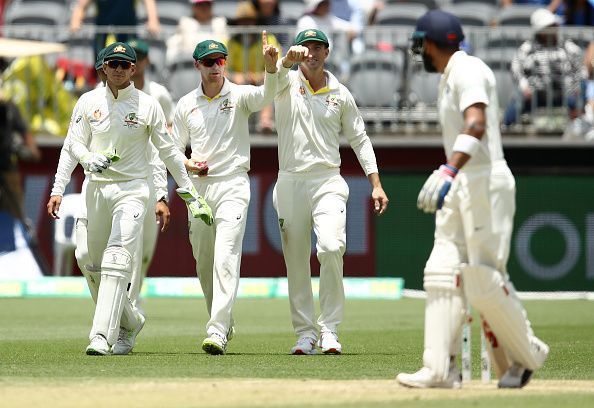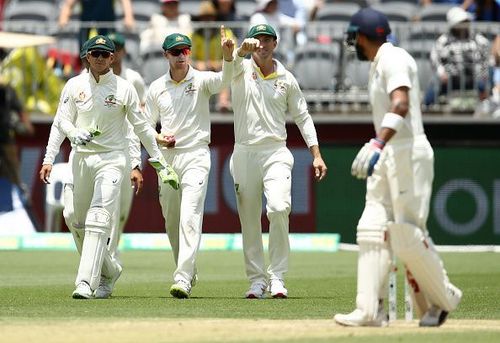
Should the on-field Umpire give a soft signal when the decision is referred to the third umpire?

India were progressing serenely in the first session of the third day at Perth when the centurion Virat Kohli nicked a ball from Pat Cummins and the catch was ‘taken’ by Handscomb.
The ball was dipping on the slip fielder and to the naked eye, there seemed to be a lot of doubt as to whether the catch was taken cleanly or the ball had touched the ground while the catch was attempted.
Naturally, the decision was referred to the third umpire to judge the veracity of the catch using available technology. Nigel Llong saw the ‘catch’ from various angles, as did the TV audience all over the world.
From no angle, it seemed like a completely clean catch. On the other hand, there did not seem to be any clinching evidence as to whether the ball had touched the ground before or while the catch was being attempted.
The time tested tradition in cricket is that in such situations, the benefit of doubt usually goes to the batsman. However, with the advent of technology, and especially after DRS has come into the picture, the benefit of doubt no longer seems to go to the batsman, but to the on-field umpire.
In this particular case, the on-field umpire had given the soft signal “out”. It is quite possible that if he had given the soft signal “not out”, Kohli would have stayed on. After Virat Kohli’s exit, India had its familiar collapse, despite the little cameo from Rishabh Pant and fell 43 runs behind Australia in its first innings. In the context of the match, this moment could most likely be the turning point of the match.
One does not want to argue with Nigel Llong’s decision-making. He had to find clinching evidence to overturn the on-field umpire’s decision, in the absence of which he had no option but to go with the on-field umpire’s decision.
When it comes to LBW decisions, there is absolutely no issue with going with the umpire’s call. There, the on-field umpire has his full concentration on the ball that thuds into a pad less than twenty-two yards away. But in case of a catch such as this one, the distance is much larger and the path of the ball is not a straight one, as is the case with an LBW decision.
So, it makes little sense for the on-field umpire to give a ‘soft signal’ in such cases. Let the third umpire judge whether the catch was clean or not. In case of inconclusive evidence, the time-honoured tradition of giving the benefit of doubt to the batsman should be followed.